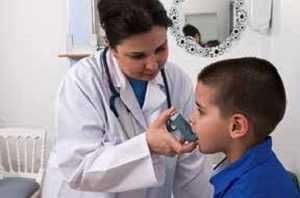Healthy Schools
The Right Place for a Healthy Start
At A Glance 2016
Establishing healthy behaviors during childhood is easier and more effective than trying to change unhealthy behaviors during adulthood. Schools play a critical role in helping children develop lifelong healthy habits. Each day, 132,000 schools provide a setting for 55 million students to learn about health and healthy behaviors.
The Centers for Disease Control and Prevention (CDC) is at the forefront of the nation’s efforts to promote the health and well-being of children and adolescents in schools.
Public Health Problem
Unhealthy behaviors and chronic diseases are increasingly common in children and adolescents in the United States. The percentage of children aged 6 to 11 years who were obese increased from 7% in 1976-1980 to nearly 18% in 2011-2014. Similarly, the percentage of adolescents aged 12 to 19 years who were obese increased from 5% to 21% during the same period. About 1 in 4 adolescents suffers from a chronic condition, such as diabetes and asthma.
Children with unhealthy behaviors or chronic health conditions may face lower academic achievement, increased disability, fewer job opportunities, and limited community interactions as they enter adulthood. They also may miss more school, which reduces their opportunities and time for learning.
Schools can help children and adolescents improve their dietary and physical activity behaviors and manage their chronic conditions. They can create healthy environments for students by using practices and policies that support healthy eating and regular physical activity and by providing ways for students to learn about and practice these behaviors. Healthier behaviors not only prevent chronic diseases, they are also linked to academic achievement and success.
CDC’s Response
The National Center for Chronic Disease Prevention and Health Promotion (NCCDPHP) works in four key areas or domains: epidemiology and surveillance, environmental approaches, health care system interventions, and community programs linked to clinical services. This comprehensive approach supports healthy choices and behaviors, makes healthier options more available, and helps Americans better manage their health.
CDC works with states, school systems, communities, and national partners to prevent chronic disease and promote the health and well-being of children and adolescents in schools. With $15.4 million in FY 2016 funding, CDC’s Healthy Schools program supports these efforts by focusing its activities in three of NCCDPHP’s four domains: epidemiology and surveillance, environmental approaches, and community programs linked to clinical services.
CDC is committed to leading public health efforts to promote well-being, reduce and prevent chronic conditions, and eliminate health disparities. To be more effective, CDC embraces the Whole School, Whole Community, Whole Child model (see page 3) and works with key leaders from the fields of health, public health, education, and school health.
Epidemiology and Surveillance
CDC uses three surveillance systems to monitor several health behaviors, practices, and policies in schools: the Youth Risk Behavior Surveillance System (YRBSS), the School Health Policies and Practices Study (SHPPS), and the School Health Profiles (Profiles). Data collected by these systems help CDC, local education agencies, and partners identify and set priorities.
By conducting research and evaluation activities, CDC can determine the best strategies for encouraging healthy behaviors in schools. The agency also works to give practitioners in educational settings the tools they need to put effective programs into place. In addition, CDC develops guidelines and strategies that serve as the foundation for school-based programs related to healthy eating, physical activity, and management of chronic conditions.
CDC has a long history of transforming research into practical tools and resources that can be used in a variety of settings. For example, Training Tools for Healthy Schools is a network of workshops on how to improve school health policies, programs, and curricula. Qualified trainers teach school staff how to use the following CDC tools: Physical Education Curriculum Analysis Tool, School Health Guidelines to Promote Healthy Eating and Physical Activity, School Health Index: A Self-Assessment and Planning Guide, and Health Education Curriculum Analysis Tool.
Environmental Approaches
A successful, well-coordinated school health program calls for a productive relationship between administrators, teachers, parents, students, school board members, and community leaders. Working together, they can develop an action plan for an array of school health policies, programs, and services.
Through the cooperative agreement State Public Health Actions to Prevent and Control Diabetes, Heart Disease, Obesity and Associated Risk Factors and Promote School Health, CDC funds all 50 states and the District of Columbia to reduce the risk factors associated with childhood obesity and to promote the well-being and healthy development of all children and youth.
As part of this program, CDC supports use of the following proven strategies in schools:
- Healthier nutrition environments.
- Comprehensive physical activity programs and physical education policies.
- Improved processes and better training to help students manage chronic conditions.
CDC also supports partners and all state health and education departments by providing technical assistance and by developing specialized tools and resources to support their efforts. In addition, CDC funds national nongovernmental organizations to help schools and communities create environments that improve health and educational outcomes for children and adolescents.
Community Programs Linked to Clinical Services
In today’s school environment, managing chronic health conditions can be a challenge for school personnel. A coordinated effort that involves family members, community groups, social service agencies, and medical providers working with teachers, school nurses, and staff is crucial.
In addition to these partnerships at the local level, CDC gives schools well-researched and effective guidance and support to help them improve school health services, policies, and practices. This support helps schools and students manage chronic conditions like diabetes, asthma, and food allergies. Providing health services in schools helps reduce absences among children with chronic conditions.
Whole School, Whole Community, Whole Child (WSCC) Model
Impact of CDC’s Investments
CDC’s leadership, resources, and expertise are helping to create healthier school environments across the nation. For example, during 2000-2014, the percentage of US schools offering two or more fruits and vegetables every day for lunch, more low-sodium canned vegetables instead of regular canned vegetables, and more low-sodium recipes increased significantly.
During 2013-2015, activities conducted as part of the State Public Health Actions program resulted in the following:
Related Materials
Fast Facts
- Each day, 132,000 schools provide a setting for 55 million students to learn about health and healthy behaviors.
- The percentage of US children aged 6 to 11 years who were obese increased from 7% in 1976-1980 to nearly 18% in 2011-2014. The percentage of adolescents aged 12 to 19 years who were obese increased from 5% to 21% during the same period.
- CDC develops effective tools and recommendations to help states create healthy school environments for all children and youth.
- The Whole School, Whole Community, Whole Child model brings together health, public health, education, and school health sectors to improve health and learning.

What Can Schools Do?
- Increase the quantity and quality of physical education and physical activity in schools. Regular physical activity in childhood and adolescence improves strength and endurance; helps build healthy bones and muscles; helps control weight; reduces anxiety and stress; increases self-esteem; and may improve academic performance, blood pressure, and cholesterol levels.
- Improve the nutritional quality of foods and promote healthy foods and beverages in schools. Healthy eating in childhood and adolescence supports proper growth and development and can prevent health problems like obesity, cavities, iron deficiency, and osteoporosis.
- Improve the quantity and quality of health education focused on chronic disease prevention. Preventing chronic diseases is a learning process, and schools are an excellent place to gain skills for understanding and avoiding conditions like obesity, diabetes, and asthma. Students can learn how to make smart food choices; exercise to build strong, fit bodies; and monitor their health.
- Improve monitoring and management of chronic conditions. Using proven practices to better manage students with chronic health conditions like diabetes, asthma, and food allergies can help schools improve student health and reduce absenteeism.
Whole School, Whole Community, Whole Child
Public health and education serve the same children, often in the same settings. More alignment, integration, and collaboration is needed between health, public health, education, and school health sectors to improve each child’s cognitive, physical, social, and emotional development.
To address this need, CDC worked with the global education association ASCD and key leaders in education and public health to develop the Whole School, Whole Community, Whole Child (WSCC) model. This model expands on CDC’s Coordinated School Health model, which has been the blueprint for integrating health-promoting practices in schools since 1987.
The WSCC model strengthens the collaborative approach to improving learning and health in our nation’s schools. Through this model, CDC will more fully integrate health services and programs into the day-to-day life of schools and students. This approach directly addresses the relationship between learning and health.

- 18.3 million students and more than 4,200 local education agencies being reached with CDC tools and training.
- A 21% increase in the percentage of schools that did not sell less healthy foods and drinks.
- 57% of K-12 students attending physical education classes on 1 or more days in an average week when in school.
- 98% of schools identifying and tracking students with chronic conditions.
Future Directions
CDC has identified an emerging need for quality training and professional development using low-cost and accessible technologies. To meet this need, the agency is converting its resources to self-directed e-learning modules that include learning objectives, resource links, videos, and continuing education opportunities. These efforts will expand the reach of CDC’s tools beyond traditional workshops to trainings that are quicker and more cost-effective.
Working with partners, CDC will continue to find ways to reduce chronic absenteeism caused by chronic health conditions. These efforts will focus on:
- The link between academic achievement and the management of chronic conditions in schools.
- How schools can improve their ability to help students stay healthy.
The agency will also begin to focus on increasing opportunities for healthy eating and physical activity in after-school programs that are located in schools.
- Page last reviewed: June 8, 2016
- Page last updated: June 8, 2016
- Content source:



 ShareCompartir
ShareCompartir
